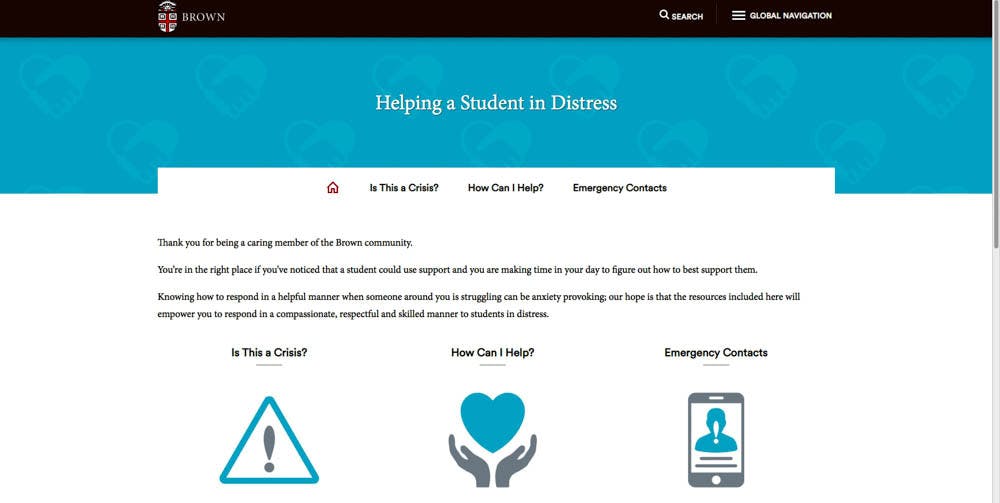A revised version of the University’s “Helping a Student in Distress” website launched earlier this month, which aims to be more accessible for students experiencing mental health issues and peers hoping to help them, according to an announcement from the Office of the Vice President for Campus Life.
Counseling and Psychological Services and Student Support Services assisted the Office of the Vice President for Campus Life in updating the site, which provides information for faculty, staff and students to help peers whom they believe may be in stress, distress or crisis.
“The old site was more directly targeted toward nonstudents seeking to help a student,” said Timothy Shiner, senior associate dean of students and director of Student Support Services. “So expanding it to also have information that is written more to the student lens was part of the goal.”
Students may find it difficult to differentiate between stress, distress and crisis, and the updated site describes how students may go about addressing each level of concern with their peers, Shiner said.
“We don’t necessarily want staff, faculty (and) students thinking that if somebody cries they automatically have to go to CAPS, because everyone cries. But more sort of having a dialogue with them and understand(ing) if it’s momentary stress or something that’s been building and impacting their functioning or if it’s something that’s a safety issue where you need more support,” said CAPS Psychologist Erin Lane-Aaronian.
The new website incorporates a new model for helping students in distress, called the BEAR Project, which stands for Be Present, Engage, Ask and Refer. Brown had been using a national model called QPR, or “Question, Persuade, Refer,” but Lane-Aaronian and CAPS Licensed Independent Clinical Social Worker Jorge Vargas developed the BEAR model to better fit the needs of the Brown community.
The “BEAR project is the evolution of our suicide prevention training that we were doing on campus with QPR,” Vargas said. “So the way that we envisioned it was that instead of just focusing on suicide, we wanted to be supportive of people in lots of different stressful situations.”
Dorothy Jiang ’19, an independent concentrator in Intersectional Mental Health and a member of Project LETS, studied QPR as part of her senior capstone project.“I personally have found that QPR can be a little bit reductionistic in terms of addressing identity and culture, not only from a race, ethnicity and personal identity perspective, but also from a campus culture perspective,” Jiang said.
The Office of the Vice President for Campus Life also hired a visual design team from University Communications to create new, more colorful graphics to better serve the student audience.
“We know that students right now just scroll through things, and if they see a big paragraph they’re not really going to engage with it, so we’re definitely catering to students by making it clear and concise,” said Assistant Director for Campus Life Initiatives Isabella Dueñas. “Especially because it’s a crisis resource, it needs to be clear, and it needs to be simple.”





